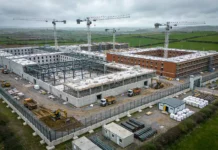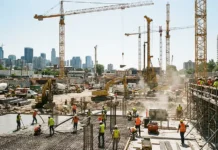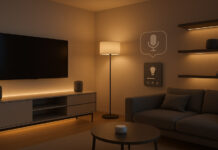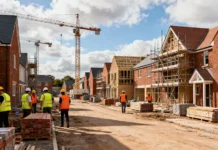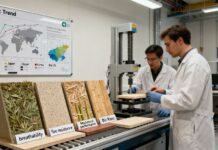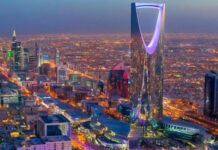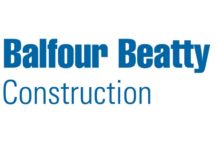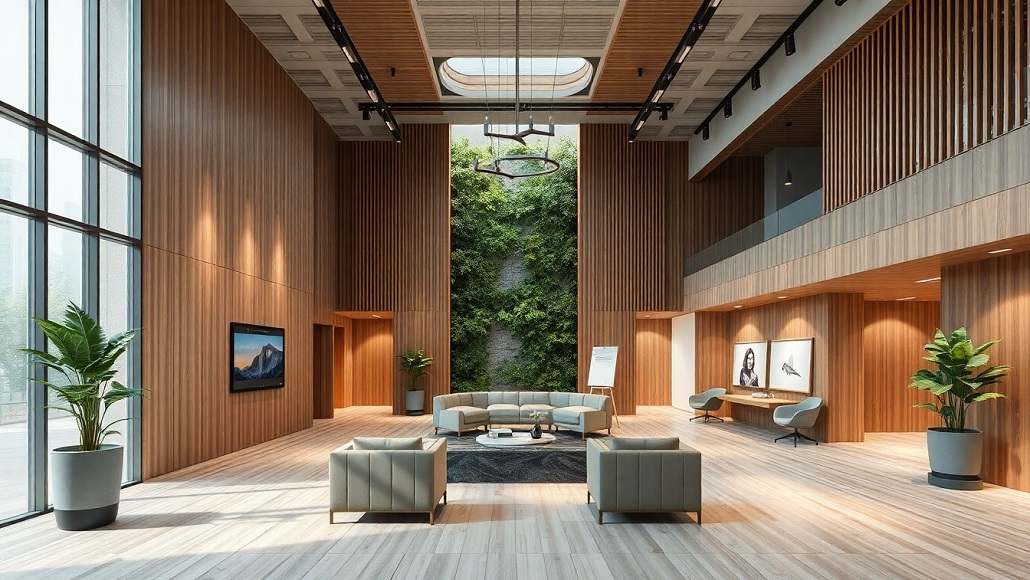Future Trends in Building Decoration
As the world continues to change, so does the area of building decoration. With swift urban development, technological progress, and an increasing focus on sustainability, the scene of building design and decoration is undergoing significant transformations. As we are growing rapidly towards adapting to modern living, professionals in the industry and stakeholders must keep abreast of evolving in building decoration trends to remain competitive and relevant. This article explores the expected advancements in building decoration, concentrating on the incorporation of sustainable materials, the emergence of multifunctional spaces, and the innovative strategies that businesses can adopt to adjust to these shifts.
The Sustainable Shift in Building Decoration
Global conversion to sustainability is among the most dramatic trends that will shape future directions in building ornamentation. As the public becomes more environmentally aware, demand for environmentally sustainable building practices and products increases. Green building activity is expected to expand annually at 14% until 2025, an indication of the increasing significance of sustainability in construction, World Green Building Council reports.
India and Indonesia are at the forefront of incorporating sustainable materials into building decor design. For example, bamboo—one of the most renewable materials with great strength and lightness—is being used in all sorts of applications, ranging from flooring to wall decorations. Bamboo’s potential has been acknowledged by the Indian government, and it is encouraging initiatives to advance its cultivation and implementation for construction purposes. In an Indian Council of Agricultural Research-published study, bamboo is seen as a prominent material that can be used to minimize carbon footprints while promoting local economies.
Recycled glass and reclaimed wood, aside from bamboo, are becoming popular in building ornamentation. Recycled glass can be reused to make decorative tiles, countertops, and wall finishes, giving a distinct look while minimizing wastage. Likewise, reclaimed wood, obtained from aged buildings or pieces of furniture, brings warmth and character to interiors along with fostering sustainability. As per a study by Grand View Research, the reclaimed wood industry is estimated to reach $682.3 million by 2025, reflecting high demand for this green product.
The focus on sustainability not only supports international environmental objectives but also improves the overall health of indoor spaces. Structures that incorporate sustainable materials tend to be healthier for those who use them, supporting healthier air quality and limiting exposure to toxic chemicals found in typical building materials.
The Evolution of Multifunctional Spaces
As urbanization intensifies, particularly in densely populated regions of Asia, homes are evolving to accommodate multifunctional spaces that balance work, leisure, and family life. This change is happening because more people are working from home and require homes that can change with them. A survey by McKinsey found that up to 60% of workers in Asia increasingly want hybrid work arrangements. This has led to a rise in demand for homes that can serve many purposes.
Multifunctionality in building decoration is a concept that entails designing spaces that one can easily change from one use to another. A living room, for instance, can be a home office during the day and an evening family gathering space. This flexibility is important in tight urban areas where space is limited. Designers are now incorporating modular furniture, folding partitions, and creative storage that enable people to change their spaces at will.
In India, the phenomenon of “smart homes” is on the rise, with the use of technology combined with multifunctional design. Smart home systems have the ability to regulate light, temperature, and security, developing an atmosphere responsive to the needs of the occupants. With a growing need for optimization of efficiency and comfort in living spaces, smart, multifunctional designs will be in increasing demand.
Technological Innovations in Building Decoration
Looking into the future, technological advancements hold an important position in defining future trends in building ornamentation: looking ahead to 2025 and beyond. Virtual reality (VR) and augmented reality (AR) technologies are revolutionizing the way designers and clients engage with building designs. These technologies create immersive experiences that enable stakeholders to visualize and update designs prior to starting construction, resulting in more informed choices and fewer expensive changes.
In addition, advancements in sustainable materials science are opening up new fronts in building decoration. For instance, eco-friendly composites such as bioplastics are being engineered to substitute conventional materials in several applications. These innovations not only make buildings more environment-friendly but also provide distinctive aesthetic values that can improve building design.
3D printing is yet another technological revolution that is transforming the construction sector. The technique makes it possible to make complicated designs and structures that are hard to make with traditional methods. As 3D printing gets better, it will make production more environmentally friendly by using less material and money.
Cultural Influences on Design Trends
Cultural factors will play a big role in deciding what building decorations will be like in the future. In Indonesia, for example, traditional design elements are being reinterpretated to suit contemporary aesthetics while still honoring cultural heritage. Local artisans are now experimenting with indigenous materials and craftsmanship incorporated into modern designs, resulting in a distinct blend of the new and the old.
For example, the old Indonesian houses are typical with open areas and natural ventilation, which these days are being incorporated into contemporary architectural works. This not only improves energy efficiency but also promotes a relationship with nature, valued more and more in modern design.
Likewise in India, incorporation of Vastu Shastra principles—a traditional system of architecture that seeks harmony and balance—into contemporary building decor is becoming popular. Property owners are turning to patterns that are in accordance with their values but embracing modern looks.
Conclusion
In summary, building decoration trends of the future: shaping 2025 and beyond are characterized by a serious trend towards sustainability, technological advancement, and culturalization. As India and Indonesia set the pace in adopting green materials and multi-functional designs, the sector is expected to change according to shifting consumer needs and environmental issues.
Companies operating within the building decoration trends industry need to be ahead of the curves by embracing sustainable models, technology, and cultural influences in their designs. This way, not only can they improve their competitiveness in the market but also help create a more sustainable and resilient built environment. As we move into the future, the focus on creative, versatile, and sustainable designs will dictate the future of building ornament, bringing us spaces not just of beauty but also of conscience and harmony with the world.




